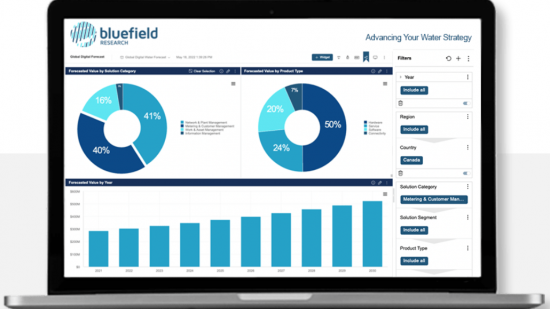
|
市場調査レポート
商品コード
1455819
食品・飲料用水:市場動向、予測(2024年~2030年)Water for Food & Beverage: Market Trends and Forecasts, 2024-2030 |
||||||
|
|||||||
| 食品・飲料用水:市場動向、予測(2024年~2030年) |
|
出版日: 2024年03月21日
発行: Bluefield Research
ページ情報: 英文 25+ Pages
納期: 即日から翌営業日
|
全表示
- 概要
- 目次
高度に断片化された食品・飲料製造産業は、主要市場における人口の拡大、消費者の選好の進化(植物性食品など)、持続可能性への関心の高まりにより、急速に成長しています。水・廃水管理はこうしたシフトの影響を受けるため、水ソリューションプロバイダーと多国籍企業は、今後の機会に対処しようと競い合っています。
企業は水使用量の削減や資源の回収など、持続可能な慣行を採用するよう顧客からの圧力が高まっています。このような企業の持続可能性への注力は、特に顧客に対応するブランドにとって競争優位性となる可能性があります。
当レポートでは、世界の食品・飲料用水市場について調査分析し、産業動向、インフレの圧力、施設レベルの使用量、政策インセンティブを考慮した、2024年~2030年の世界の食品・飲料産業の資本支出と営業支出の予測を提供しています。
レポート+データオプション
サンプルビュー

この分析の一部として、当社の水専門家はData Navigatorプラットフォームの関連データダッシュボードを更新しました。
目次
第1章 - 市場促進要因・動向
- 食品・飲料用水の促進要因と抑制要因
- 人口増加が食品の生産と加工を促進
- 食品・飲料のサプライチェーン
- 水不足が主な食品・飲料生産のホットスポットにリスクをもたらす
- 水は食品・飲料商品の価格に影響を与える
- 米国の食品製造施設の規模が市場の断片化を明示する
第2章 - 食品・飲料向け水管理
- 食品・飲料用水の循環
- 水使用プロセスの内訳
- 水の持続可能性目標が運用効率を高める
- 食品・飲料の廃水処理の動向
- 食品・飲料廃水の追加料金がオンサイトソリューションを促進
第3章 - 市場見通し
- 予測手法
- F&B施設のCAPEXとOPEXの内訳
- 前年比の水使用量:地域別
- 世界の食品・飲料製造に対する水管理支出
- 食品・飲料の水使用量:入力カテゴリ別
- さまざまな指標が水プロバイダーの機会に影響を与える
- 食品・飲料生産用水の概要:国別
第4章 - ケーススタディ
- Lagunitas Brewing Co. - Petaluma Brewery(2015年)
- Smithfield Foods - Sioux Falls, South Dakota(2023年)
The highly fragmented food and beverage manufacturing industry is rapidly growing due to population expansion in key markets, evolving consumer preferences (e.g., plant-based foods), and a heightened focus on sustainability. Given that water and wastewater management are impacted by these shifts, water solutions providers and multinationals are racing to address the opportunities ahead.
Companies are facing increasing pressure from customers to adopt sustainable practices, such as reducing water usage and recovering resources. This focus on corporate sustainability can be a competitive advantage, particularly for customer-facing brands.
This Insight Report provides a 2024-2030 global forecast of capital and operating expenditures for the food & beverage industry considering industry trends, inflationary pressures, facility-level usage, and policy incentives.
Report+Data Option:
SAMPLE VIEW

As part of this analysis, our water experts have updated a relevant data dashboard in our Data Navigator platform.
Table of Contents
Section 1 - Market Drivers & Trends
- 1.1. Water for Food & Beverage Drivers & Inhibitors
- 1.2. Population Increases Drive Food Production and Processing
- 1.3. The Food & Beverage Supply Chain
- 1.4. Water Scarcity Poses Risks for Key Food & Beverage Production Hot Spots
- 1.5. Water Impacts Food & Beverage Commodity Prices
- 1.6. U.S. Food Manufacturing Facility Size Highlights Market Fragmentation
Section 2 - Water Management for Food & Beverage
- 2.1. Food & Beverage Water Cycle
- 2.2. Water Usage Process Breakdown
- 2.3. Water Sustainability Goals Set to Enhance Operational Efficiency
- 2.4. Food & Beverage Wastewater Treatment Trends
- 2.5. Food & Beverage Wastewater Surcharges Promote On-Site Solutions
Section 3 - Market Outlook
- 3.1. Forecast Methodology
- 3.2. F&B Facility CAPEX & OPEX Breakdown
- 3.3. Year-over-Year Water Usage by Region
- 3.4. Global Water Management Spending for Food & Beverage Manufacturing
- 3.5. Food & Beverage Water Spend by Input Category
- 3.6. A Variety of Metrics Influence Opportunity for Water Providers
- 3.7. Water for Food & Beverage Production Overview by Country
Section 4 - Case Studies
- 4.1. Lagunitas Brewing Co. - Petaluma Brewery (2015)
- 4.2. Smithfield Foods - Sioux Falls, South Dakota (2023)

